1985 Volkswagen Quantum problems
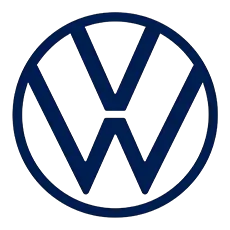
The Volkswagen Passat (B2) is an automobile which was produced by German manufacturer Volkswagen from 1981 to 1988. It was the second generation of the Volkswagen Passat. The platform was slightly longer than the preceding Passat (B1). As with the previous generation, it was based on the platform of the Audi 80; the corresponding B2 version of which had been already launched in 1978. The Santana was also manufactured in China, Brazil, Mexico (as the Corsar, from 1984 and 1988) and Argentina (as the Carat between 1987 and 1991). In Brazil, the Santana station wagon was sold as the Quantum. In the United States, both the Santana sedan and station wagon were sold as the Quantum. The Passat saloon and estate were produced in South Africa for their local market until 1987. The production of Passat B2 in China ended in January 2013.
History
The Body configurations for the Passat B2 included hatchback, Variant (estate/wagon), and a three-box saloon which, until the 1985 facelift, was marketed as the Volkswagen Santana in Europe. In most markets, the equipment levels were renamed from L/LS/GLS to CL/GL/CD. The four-wheel drive Syncro Variant was introduced in April 1984, initially only with the 2-litre five-cylinder engine. In August, the more powerful 2.2-litre option was added.
Like the previous generation, the B2 Passat was mainly sold with four-cylinder petrol and diesel engines. Unlike its predecessor, however, top-of the line versions received five-cylinder Audi or VW engines of 1.9–2.2 litres. In addition to four- and five-speed manuals and three-speed automatic gearboxes, the Passat/Santana was also available with Volkswagen's interesting 4+E transmission. This, also called the "Formel E", had an overdrive fourth and an even taller fifth gear, which combined with a freewheeling mechanism to provide better gas mileage but less impressive performance. Originally, this was the only five-speed transmission offered with the Passat B2. An automatic stop/start was also available in some markets.
The four-wheel drive system used in the Passat Variant Syncro shared the mechanics of the Audi 80 quattro rather than the Volkswagen Golf Syncro. When first shown, at the 1983 Frankfurt Motor Show, the car was meant to be called the "Passat Tetra". The Syncro's bottom plate was almost entirely different, requiring a transmission tunnel, a relocated gas tank, and no spare tire well (to make room for the complex rear axle assembly). Unlike the related Audi 80 quattro which used a reversed front wheel setup, the rear-axle was an adapted Volkswagen Transporter unit which enabled retaining a flat loading floor. Only the more popular estate was deemed worthy of reengineering, so as to not offer direct competition with the sedan-only Audi 80 quattro. Syncro was also available in the American market, only with the five-cylinder engine.
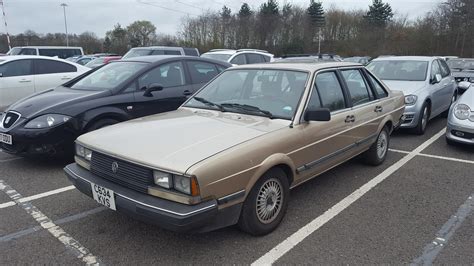
Social links
Common 1985 Volkswagen Quantum problems
The Volkswagen Quantum, sold in North America between 1982 and 1988, was the American version of the B2 Passat. This car was available in sedan, wagon, and three-door body styles, but the sedan was the least common in the US market. The Quantum was known for its great handling and attractive design, but it also had some common problems that affected its popularity and reliability.
- Cooling Problems: One of the most common issues reported by Quantum owners was cooling problems. The car's cooling system was prone to overheating, especially in hot weather or during long trips. This issue was often caused by a faulty thermostat or a leaking radiator, which could lead to engine damage if not addressed promptly.
- Rust: Another common problem with the Quantum was rust, which affected the car's body and chassis. The car's susceptibility to rust was due to its thin metal panels and poor rustproofing. Rust often started in the car's wheel wells, rocker panels, and door sills, and could eventually lead to structural damage if not treated.
- Engine Performance: The Quantum's engines, particularly the 1.8-liter four-cylinder and the 2.2-liter five-cylinder, were criticized for their lackluster performance and poor fuel efficiency. The 1.8-liter engine, which was standard in the sedan, produced only 68 horsepower and 98 lb-ft of torque, making it one of the least powerful engines in its class. The 2.2-liter five-cylinder, which was standard in the wagon, fared slightly better with 110 horsepower and 124 lb-ft of torque, but it was still less powerful and less efficient than many of its competitors.
- Transmission Issues: The Quantum's transmissions, both manual and automatic, were also problematic. The five-speed manual transmission, which was standard in most models, was often criticized for its vague and notchy shifting. The automatic transmission, which was optional, was even worse, with many owners reporting slipping, jerking, and other issues. The automatic transmission was also known for its poor fuel efficiency, which further reduced the car's already low fuel economy.
- Interior Quality: The Quantum's interior, while attractive and well-designed, was also criticized for its poor quality and durability. The car's plastics and fabrics were often cheap and flimsy, and the interior was prone to wear and tear. The car's seats, in particular, were often criticized for their lack of comfort and support, which made long trips uncomfortable for both drivers and passengers.
In conclusion, the Volkswagen Quantum, while a decent car in many ways, suffered from a number of common problems that affected its reliability and popularity. Cooling issues, rust, poor engine performance, transmission problems, and interior quality were all significant issues that plagued the Quantum throughout its production run. While the car had its strengths, such as its handling and design, these issues ultimately contributed to its failure in the marketplace.
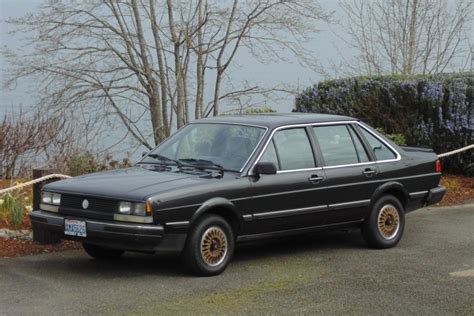
1985 Volkswagen Quantum car problems categorized by type of issue
After analyzing all complaints sent to the NHTSA and researching popular Volkswagen Quantum problems, we found that the most common problems with these 2023 model year vehicles are:
- Service brakes problems
- Hydraulic problems
The graph below shows statistics for all 1985 Volkswagen Quantum vehicle components and the number of complaints received.
1985 Volkswagen Quantum complaints
The NHTSA has received 1 complaints about various vehicle components related to the 1985 Volkswagen Quantum.
SERVICE BRAKES, HYDRAULIC PROBLEM
- Date Of Incident: 1995-01-23
- Components: SERVICE BRAKES, HYDRAULIC
- Summary: THREE OF FOUR BONDED PADS FAILED/BROKE OFF FROM METAL BACKING PLATES; CAUSED LOSS OF BRAKE CONTROL; PEDAL TRAVELED TO FLOOR; EXTENDED BRAKING. TT
1985 Volkswagen Quantum recalls
The National Highway Traffic Safety Administration (NHTSA) has issued 1 recalls for different components of the 1985 Volkswagen Quantum.
- Manufacturer: VOLKSWAGEN OF AMERICA,INC
- Components: VEHICLE SPEED CONTROL
- Summary: EXCESSIVE WEAR OF IDLE STABILIZER COULD CAUSE IDLE FLUCTUATIONS.
- Consequence: IDLE FLUCTUATIONS COULD RESULT IN UNSATISFACTORYDRIVEABILITY.
- Remedy: REPLACE IDLE STABILIZER.
Other years of Volkswagen Quantum
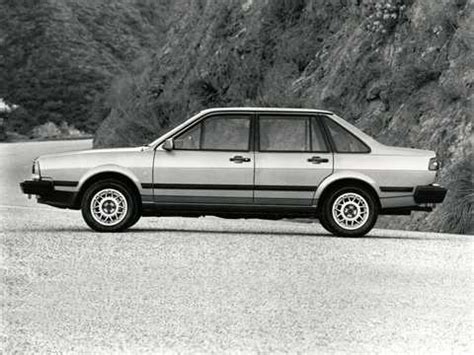

Are you having problems with your 1985 Volkswagen Quantum?
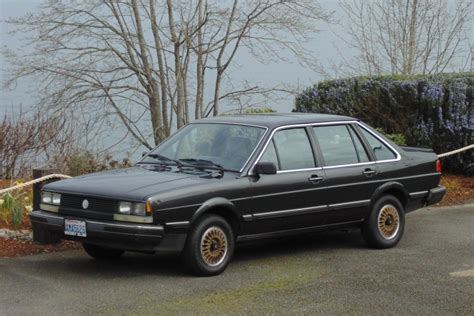


Leave your review of 1985 Volkswagen Quantum